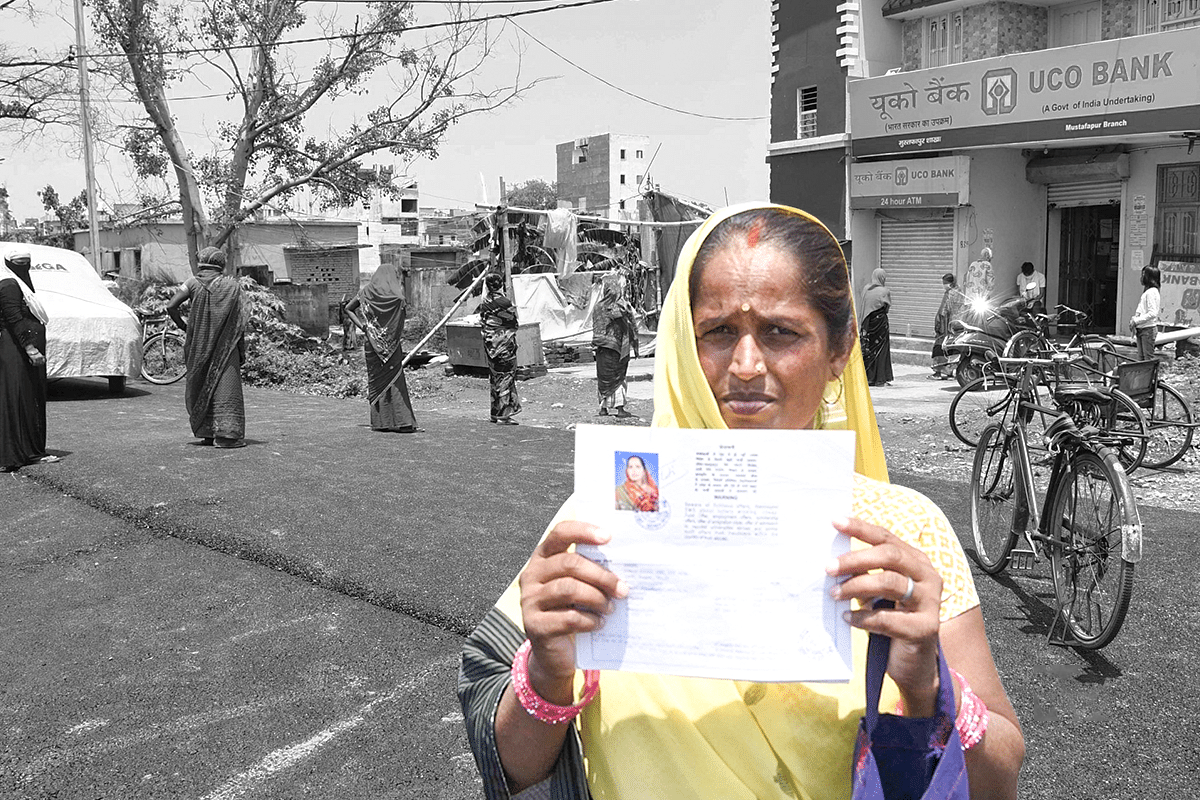News Brief
RBI Launches Financial Inclusion Index: Here Are The Highlights
- According to RBI, the index comprises 97 indicators which capture ease of access, availability and usage of services, and quality of services.

A woman showing her bank pass book.
The Reserve Bank of India (RBI) on Tuesday launched its Financial Inclusion Index (FI-Index). The FI-Index for the year ending March 2021 stood at 53.9 as compared to 43.4 for the year ending March 2017.
According to the Committee on Financial Inclusion, ‘financial inclusion’ is defined as the process of ensuring access to financial services and timely and adequate credit where needed by vulnerable groups such as weaker sections and low-income groups at an affordable cost.
The index has been constructed without any base year as, according to the RBI, the index intends to capture the cumulative effort of all stakeholders over the years towards financial inclusion. The index comprises of three broad components which are access, usage and quality, each having a weightage of 35 per cent, 45 per cent and 20 per cent respectively. It has incorporated details of banking, investments, insurance, postal as well as the pension sector.
According to RBI, the index comprises 97 indicators which capture ease of access, availability and usage of services, and quality of services. RBI had announced the conceptualisation of this index back in April 2021. It stated that henceforth, the FI-Index would be released annually in July.
Government Measures To Improve Financial Inclusion
The most popular programme of the government towards financial inclusion has been the Jan Dhan Yojana through which 42 crore bank accounts have been opened till August 2021 out of which 55 per cent are owned by women.
The National Centre for Financial Education (NCFE) has been set up by a group of regulators — RBI, Securities Exchange Board of India (SEBI), Insurance Regulatory and Development Authority of India (IRDAI) and Pension Fund Regulatory and Development Authority (PFRDA).
The NCFE has conducted a total of 5,245 financial literacy programmes in the previous financial year. The target groups of such programmes included school teachers and students, college students, women, farmers/Farmer Producer Organisations (FPOs), migrant labourers, etc.
Centres for Financial Literacy (CFLs) have been set up by the RBI in association with banks to spread financial literacy. RBI aims to scale up the CFL project across the country at the block level by March 2024.
Further, the National Strategy for Financial Education (2020-25) aims to integrate financial literacy into the education curriculum for school children. At present, 15 state educational boards have included modules on financial education in their school curriculum.
The RBI has also advised the banks to put in place financial inclusion plans (FIPs) consisting of achievements against several parameters.
The RBI Governor, Shaktikanta Das, while speaking at an event in July this year, stated that financial inclusion and inclusive growth reinforce financial stability and that greater financial literacy and education, together with sound consumer protection mechanisms would ensure that people at the bottom of the pyramid are empowered to take informed financial decisions. He also stated that this would also enable banks, NBFCs, MFIs, etc, to enhance their customer base and products and diversify their balance sheet.
Support Swarajya's 50 Ground Reports Project & Sponsor A Story
Every general election Swarajya does a 50 ground reports project.
Aimed only at serious readers and those who appreciate the nuances of political undercurrents, the project provides a sense of India's electoral landscape. As you know, these reports are produced after considerable investment of travel, time and effort on the ground.
This time too we've kicked off the project in style and have covered over 30 constituencies already. If you're someone who appreciates such work and have enjoyed our coverage please consider sponsoring a ground report for just Rs 2999 to Rs 19,999 - it goes a long way in helping us produce more quality reportage.
You can also back this project by becoming a subscriber for as little as Rs 999 - so do click on this links and choose a plan that suits you and back us.
Click below to contribute.
Latest